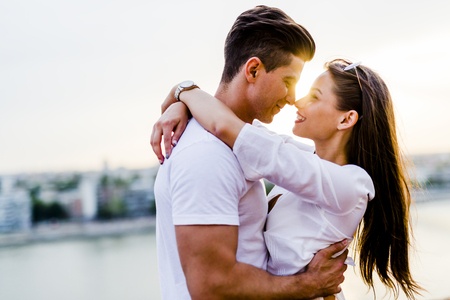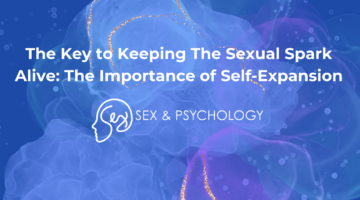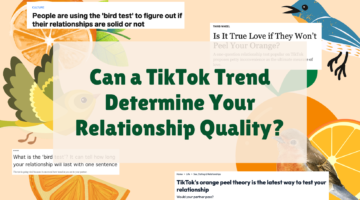Why Romantic Partners Tend To Look Like Each Other
November 16, 2016 by Justin Lehmiller
If you’re anything like me, you’ve probably noticed that a lot of romantic couples look alike. Have you ever wondered why that is? Scientists have found that there may be at least two reasons for this: not only do we have a tendency to choose partners who look like us in the first place, but it also turns out that the longer we’re with a partner, the more we come to look like them.
Romantic partners often look like each other right from the start because we’re attracted to people with similar looks. Why? Scientists believe we have a predisposition to choose partners whose genes resemble our own. Compelling support for this idea comes from research finding that the spouses of identical twins are more physically similar to one another than the spouses of fraternal twins [1]. In other words, the more genes two people share in common, the more likely they are to go for similar characteristics in their romantic partners.
As additional evidence for this phenomenon, consider a study in which heterosexual participants rated the attractiveness of a set of facial photos [2]. Embedded in this series of images was a photo of their own face that had been digitally morphed into the other sex. Participants didn’t recognize the morphed face as their own and, believe it or not, they rated it the most attractive of all!
What’s even more fascinating, though, is that romantic partners’ similarity to one another actually grows over time. Support for this idea comes from a classic study in which college undergraduates were asked to evaluate photographs of couples who were supposedly newlyweds or couples who had been together for 25 years of marriage [3]. Specifically, participants were shown two faces at a time and were asked to evaluate how similar each pair was and how likely they were to be married. The kicker is that sometimes the pair they saw was an actual married couple, while other times it was just two random people of similar age who had been paired together.
What the researchers found was that participants rated the faces of older married couples as more similar than those of both newlyweds and random pairs. In other words, the facial pairs that looked the most alike came from actual couples who had been together a long time.
They also found that, for young couples, participants could not distinguish between newlyweds and random pairs in terms of whether they were actually married; however, among older couples, participants were better at detecting who was married and who wasn’t (something we presume occurred on the basis of facial similarity). One other particularly fascinating result is that the faces that were judged to be most similar belonged to the couples who reported being the happiest.
So how do we explain these results? Why might couples start to look more similar over time? We cannot say for sure, but the authors argue that it’s a function of empathy. The basic idea is that romantic partners frequently empathize with each other and “share” their emotional states. Because sharing emotions usually means sharing the same facial expressions, this provides a mechanism for increasing physical similarity. For instance, by moving their facial muscles the same way over a long period of time, romantic partners may eventually develop the same pattern of wrinkles around their mouths and eyes.
Of course, other explanations are possible. For instance, increased resemblance could have something to do with residing in the same environment, having a similar diet, or something else entirely. Unfortunately, the results of this study don’t point to a definitive reason.
Regardless of the explanation, what all of this research suggests is that, while we do indeed seem to be drawn to similar-looking people, it appears this similarity is something that just might increase as we grow old with our partners.
Want to learn more about Sex and Psychology ? Click here for previous articles or follow the blog on Facebook (facebook.com/psychologyofsex), Twitter (@JustinLehmiller), or Reddit (reddit.com/r/psychologyofsex) to receive updates.
[1] Rushton, J., & Bons, T. (2005). Mate choice and friendship in twins: Evidence for genetic similarity. Psychological Science, 16, 555-559. doi:10.1111/j.0956-7976.2005.01574.x
[2] Penton-Voak, I. S., Perrett, D. I., & Peirce, J. W. (1999). Computer graphic studies of the role of facial similarity in judgements of attractiveness. Current Psychology: A Journal for Diverse Perspectives on Diverse Psychological Issues, 18, 104-117. doi:10.1007/s12144-999-1020-4
[3] Zajonc, R. B., Adelmann, P. K., Murphy, S. T., & Niedenthal, P. M. (1987). Convergence in the physical appearance of spouses. Motivation and Emotion, 11, 335-346. doi:10.1007/BF00992848
Image Source: 123rf.com/Andor Bujdoso
You Might Also Like:

Dr. Justin Lehmiller
Founder & Owner of Sex and PsychologyDr. Justin Lehmiller is a social psychologist and Research Fellow at The Kinsey Institute. He runs the Sex and Psychology blog and podcast and is author of the popular book Tell Me What You Want. Dr. Lehmiller is an award-winning educator, and a prolific researcher who has published more than 50 academic works.
Read full bio >


